China Silk Road Travel Tips for First Time Travelers
The Silk Road in China is one of the greatest adventures of all time. The entire Silk Road from Xi’an to Rome covers more than 8,000 kilometers, and brought together traders from east and west in one of the most awe-inspiring trade routes in history. Crossing entire continents, the trade route along the Silk Road brought furs and skins from the west in exchange for gold, jade, spices, and silk, for which the trade route was eventually named.
For more than 2,000 years, traders trekked the route, with caravans made up of over a thousand camels, transporting their goods from one empire to another. The route actually consists of hundreds of small trade routes that stretched from the Han Empire in ancient China to the Roman Empire that encompassed all of Europe. Nowadays, you can travel along the Silk Road in China as a tourist, taking in the spectacular sites that exist along the route, and following in the footsteps of ancient traders from thousands of years ago and the famous Venetian explorer, Marco Polo.
Planning is the key to any long trip, especially one that traverses such arid and desolate areas of northern China. From the differing cultures of the various areas the Silk Road travels through to the transport and accommodation you will need along the route, here are a few insights into what you can expect on your first China Silk Road tour.
Culture Difference
The Silk Road starts in Xi’an, in the Shaanxi province of north central China. Shaanxi is one of the original birthplaces of Chinese civilization and culture, and it has a long history that dates back over 7,000 years. As one of the four ancient civilizations (the other three being Babylon, India, and Egypt), Chinese culture has developed over many thousands of years into what it is today, a harmonious blend of China’s unique and diverse ethnic groups. A mainly Buddhist culture, rich in the arts, sciences, and architectural traditions, Chinese cultural history is diverse and varied, and is a sophisticated and unique identity of philosophy and politics, heavily influenced by Confucianism, Buddhism, and Taoism.
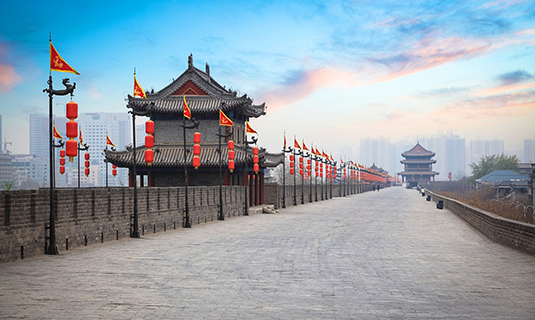
Experience the ancient civilizations of Xi'an
The cultures change immensely as you move further west along the route, and in Gansu Province, the culture is a little different from that of Shaanxi, though they all still follow the major Chinese traditions. Gansu Province includes the ancient Qin State, which formed the first dynasty of the ancient Imperial China, and while parts of Gansu Province are either Buddhist, Muslim, and even Christian, the largest majority are a mix of pagan animism, Taoism, Confucianism, and other localized folk religions.
In Xinjiang Uyghur Autonomous Region, in the far northwest of China, the predominant religion is Islam, brought to the area by the Arabic and Persian traders over the course of more than 1,500 years. Xinjiang was one of the main hubs of trade along the Silk Road, and the traders that settled in the region married local Han Chinese, converting them to Islam and increasing the Muslim population residing in this arid and desolate land. The culture of Xinjiang is more Persian and Middle Eastern than Chinese, and the Quran is followed by the people religiously, refraining to consume or touch pork in any form. This rich, Islamic culture is far different from anything in the rest of China, and is worth a visit to explore the culture and learn more about these unique people.
Join the Most Recommended China Silk Road Tours
>> 8-Day Lanzhou Xiahe Jiayuguan Dunhuang Silk Road Tour
>> 11 Days Luxurious Silk Road Tour from Xian to Kashgar
>> 14 Days Silk Road Culture Exploration from Beijing to Urumqi
Food and Drink
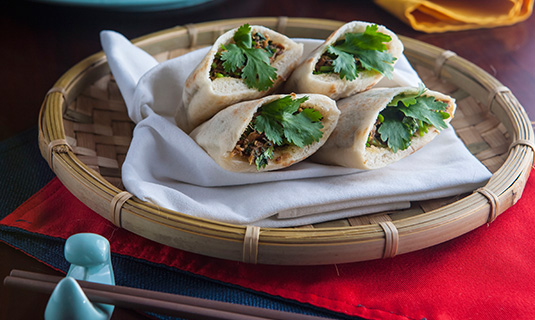
Enjoy the local food along the China Silk Road
Traveling along the ancient Silk Road in China, you will soon notice the difference in the varieties of food you can find. In the eastern end, the cuisine is predominantly Chinese, with rice and noodles and other traditional Chinese dishes, and you should have no problem finding Sichuan and Cantonese cuisine along the entire route. However, you will also find that much of the eating habits of northwest China have a distinctly Islamic influence. Pork is forbidden under Islamic law, and most of the meat in the local dishes is chicken, mutton, or goat. Grilled lamb can be found almost everywhere, and the Uyghur dish od stew with mixed vegetables is very popular everywhere you go. Known as “plov”, the stew is not very exciting, but the ingredients are always fresh and tasty.
Accommodation
The Silk Road spans more than 75 percent of China, stretching to the farthest western edge of this huge country. Accommodation along the route can vary from high-range luxury hotels to small local guesthouses. The lower-priced guesthouses have much more basic amenities than any of the other accommodation available, and in the small villages along the route, those basic facilities may be nothing more than a room with a bunk in it.
However, many of the cheaper guesthouses may not be available for foreign travelers, as there is a restriction on which hotels foreign tourists can use whilst in China. Accommodation should be registered for use by foreign tourists, otherwise you will not be allowed to stay.
Transportation
Traveling along the Silk Road, you have a choice of transportation that can be used. If you are strapped for time, you can fly between the major cities of the route, and the main airports are in Xi’an and Urumqi. Train travel is also available, and the main railway in the north of China runs from Xi’an to Urumqi, allowing you to travel in comfort, albeit a little slower than flying.
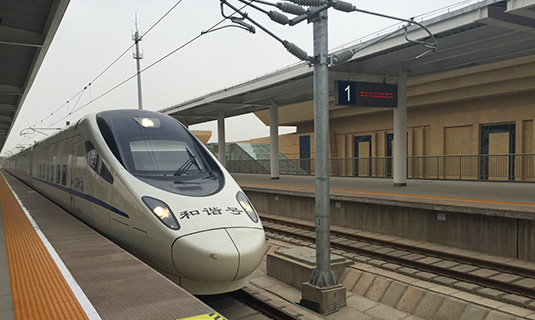
Railway from Xi’an to Urumqi
Driving is one other option, as long as you hire both the car and the driver through a travel agent. This can be more costly, but as foreign nationals cannot drive in China on their international driving license, it is the only option for a road trip by car.
Weather
Most of the route along the Silk Road is dry and arid, with a dry desert climate that means very little rain. However, summer along the Silk Road can be searingly hot, and the winter is very cold, making it best to travel in the spring and autumn seasons, for cooler weather and clearest skies. The best time to travel is from April to May and September to November, since the temperatures average around 15 degrees during the day, and the scenery is stunning along the route.
While the summer may be very hot, it is also the harvest and fruit time in the west of China, and in Xinjiang it is the time of the grape harvest, which he province is famous for. If you can stand the intense heat of this arid desert region, then you will find it worthwhile for the delightful fruits and blooms that you can find while traveling through Xinjiang.
Shopping Guide
Shopping in Xinjiang for local ethnic goods is an amazing experience, with the many markets filled with delightful wares, colorful cloths, and hand-made crafts that are well worth the price you pay. The Kashgar Bazaar is one of the largest in the region, with livestock markets on Sunday, and the main market open all week, and especially busy on Sundays. The Bazaar actually incorporates more than 20 different markets across the city, with the largest at the eastern end of the city, by the East Gate. This market has been running for over two thousand years, and was already in place when the Silk Road was first expanded.
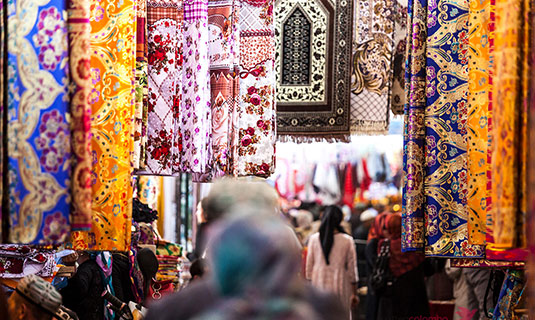
Kashgar Bazaar
There is another major market in Urumqi, the capital of the Xinjiang region, though it does feel more like a typical Chinese market than the Grand Bazaar at Kashgar. More organized that you would expect for a street market, it lacks the authentic feel of the Kashgar Bazaar, which still has that dusty, isolated outpost feel to it.
Health and Safety
Ensuring your continued health and travel safety along the Silk Road is important, and you should always follow a few simple rules to maintain your health and safety when traveling.
A visit to your local clinic before you leave your home country is advised, as you may need some vaccinations for travel to the region of Xinjiang. A mainly rural area, there are still incidences of disease that have not been fully eradicated, and you should make sure your immunization shots and vaccines are up to date. The most common health hazards on the Silk Road are the common cold and stomach upsets that result in diarrhea, often caused by food that you are not used to eating. It is also important not to drink or brush your teeth with tap water in China, as it is not up to the standard required for consumption, as with most of Asia.
It is also advisable to get your doctor’s approval for travel if you have any ongoing medical conditions, and make sure that you carry enough of your regular medication to last at least two weeks longer than your expected tour. Travel insurance that covers you for illness and accident, and has medical evacuation included, is advisable, as there is no free medical care in China, and medical evacuation to a suitable hospital could be very expensive.
Travel in China is relatively safe, as most trains that run the network of railways across China have police officers on board. Stations and airports all have a large police presence, and you will find police checkpoints in most places you go. This makes it a safer place to travel than many other places in China, though crime is not unheard of.
Apart from the occasional bag-snatching, Western China does not have a high crime rate, and you are fairly safe of you take a few precautions. Avoid having your valuables on show, and take care of your luggage at all times, for the sake of safety. Wallets should be attached to your clothing, or even kept inside your clothes, and bum-bags and concealed wallets can help to make you feel safer. Keep a few small bills and coins in your pockets or a small purse for those little snacks and bottles of water you might need at times, and keep the bulk of your cash hidden.
Related Articles and Posts
Related Trips
-
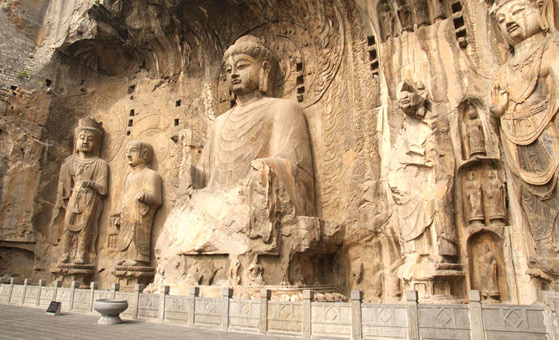 4-Day Jiayuguan Pass and Dunhuang Silk Road Short BreakView Details
4-Day Jiayuguan Pass and Dunhuang Silk Road Short BreakView DetailsJiayuguan - Dunhuang
-
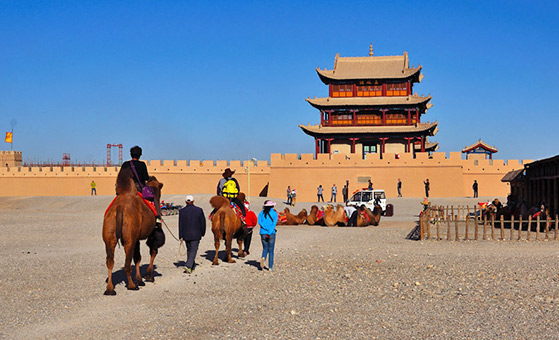 8-Day Lanzhou Xiahe Jiayuguan Dunhuang Silk Road TourView Details
8-Day Lanzhou Xiahe Jiayuguan Dunhuang Silk Road TourView DetailsLanzhou - Xiahe - Lanzhou - on the train - Jiayuguan - Dunhuang
-
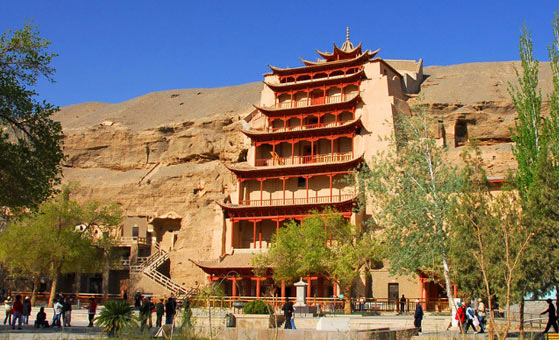 10-Day Highlights of the China Silk Road TourView Details
10-Day Highlights of the China Silk Road TourView DetailsDunhuang - on the train - Turpan - Urumqi - Kashgar - Taklamakan Desert Camp - Kashgar - Urumqi
Ask a Quick Question
 BACK
BACK

 We, the 3rdpoletour, are the pioneer of in-depth Sichuan tour. We commit to offer you the most professionaltour service to facilitate your Sichuan travel.
We, the 3rdpoletour, are the pioneer of in-depth Sichuan tour. We commit to offer you the most professionaltour service to facilitate your Sichuan travel. 

0 Comments ON “China Silk Road Travel Tips for First Time Travelers”